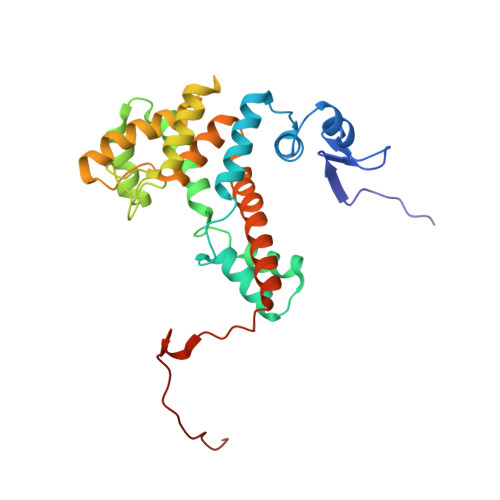Identification of the active site residues in ATP-citrate lyase's carboxy-terminal portion.
Nguyen, V.H., Singh, N., Medina, A., Uson, I., Fraser, M.E.(2019) Protein Sci 28: 1840-1849
- PubMed: 31411782
- DOI: https://doi.org/10.1002/pro.3708
- Primary Citation of Related Structures:
6NZY - PubMed Abstract:
ATP-citrate lyase (ACLY) catalyzes production of acetyl-CoA and oxaloacetate from CoA and citrate using ATP. In humans, this cytoplasmic enzyme connects energy metabolism from carbohydrates to the production of lipids. In certain bacteria, ACLY is used to fix carbon in the reductive tricarboxylic acid cycle. The carboxy(C)-terminal portion of ACLY shows sequence similarity to citrate synthase of the tricarboxylic acid cycle. To investigate the roles of residues of ACLY equivalent to active site residues of citrate synthase, these residues in ACLY from Chlorobium limicola were mutated, and the proteins were investigated using kinetics assays and biophysical techniques. To obtain the crystal structure of the C-terminal portion of ACLY, full-length C. limicola ACLY was cleaved, first non-specifically with chymotrypsin and subsequently with Tobacco Etch Virus protease. Crystals of the C-terminal portion diffracted to high resolution, providing structures that show the positions of active site residues and how ACLY tetramerizes.
Organizational Affiliation:
Department of Biological Sciences, University of Calgary, Calgary, Alberta, Canada.


















